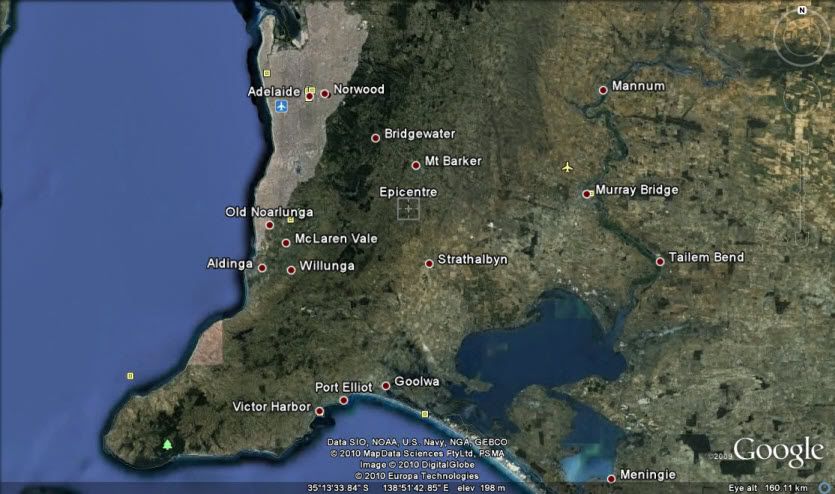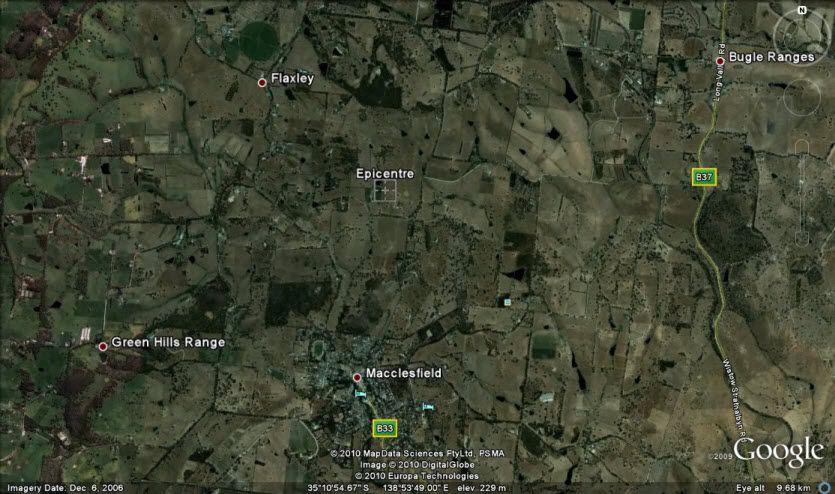OK. I'm bored waiting for today's clash at Unley, so here's a little South Australian geological trivia for you.
> The largest earthquake to have occurred in SA since 1837 was a Magnitude 6.5 quake near Beachport. It caused massive damage at Kingston, Robe and Beachport, and caused minor damage in Adelaide.

> The second largest in SA was a magnitude 6.0 in 1902, centred in Gulf St Vincent, and mainly affected Warooka on Yorke Peninsula:

> The Flinders & Mt Lofty Ranges represent the one of the most seismically active geological belts in mainland Australia.
> The Gawler Range Volcanics covering ~25,000 square kilometres on northern Eyre Peninsula represent probably the largest felsic (quartz rich) volcanic event in the Earth's history. The volume of volcanic rock, mainly dacite and rhyolite, is in the order of ~100,000 cubic kilometres. They were super hot magmas (900-1100°C) that would have been extremely explosive when they were erupted ~1590 million years ago.
> Fossils discovered in 1946 by Red Sprigg in the Ediacara Hills of the Northern Flinders Ranges represent some of the oldest multicellular life forms known to science. The site is so significant that it is a protected geological monument (poachers have been an issue in the past) and it is the only site in the southern hemisphere that has a geological period named after it. Its status as an official geological period (Ediacaran Period: 635 to 542 million years ago) was ratified in 2004 by the International Union of Geological Sciences. It is the only new geological period declared in the last 120 years.
Dickinsonia fossil from the Ediacaran fauna:

> Olympic Dam is in the top 10 largest copper resources in the world. It is the world's largest uranium resource by a country mile. It is Australia's largest gold resource. The copper, uranium and gold minerals are hosted in granite (Hiltaba Granite) which crystallised from a magma at roughly the same time as the Gawler Range Volcanic event, 1590-1580 million years ago.
> Australia has 30% of the world's uranium reserves. Most of this is in SA.
> Much of eastern SA is underlain by the South Australian Heat Flow Anomaly, which is the result of heat generated by natural radioactive decay of potassium, thorium and uranium in deeply buried granites.
> Paralana Hot springs in the northern Flinders are a surface expression of this heat flow anomaly. The springs are hot (57°C) and radioactive due to the interaction of ground waters with radioactive rocks in the Mount Painter area. Micro-organisms live quite happily in the radioactive springs.
Lesson over boys and girls






















